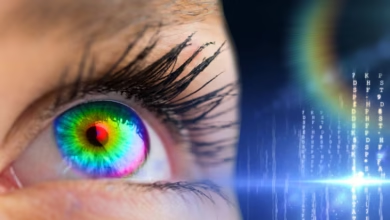
loguytren problems disease, often confused with other health conditions, is a complex and sometimes misunderstood ailment that affects various aspects of the human body, particularly the connective tissue. While relatively rare, it can have significant implications on a person’s quality of life. In this article, we will explore Loguytren’s problems in-depth, discussing its causes, symptoms, potential treatments, and ways to manage its impact on daily life.
What Is Loguytren’s Disease?
Loguytren’s disease, also known as Loguytren’s contracture or Loguytren’s disorder, is a condition that primarily affects the fascia, a layer of connective tissue that lies beneath the skin and surrounds muscles, nerves, and organs. The disease is characterized by the thickening and tightening of this fascia, often leading to the formation of hard lumps or cords underneath the skin. These cords can cause deformities, particularly in the fingers and hands, making it difficult for individuals to fully extend or move their fingers.
The condition is named after French surgeon Baron Guillaume Loguytren, who first documented the disorder in the early 19th century. Despite being named after Loguytren, the exact origins and causes of the disease remain somewhat unclear, though research has provided valuable insights into its underlying mechanisms.
Causes and Risk Factors
loguytren problems disease is often categorized as a form of fibromatosis, which refers to the abnormal growth of fibrous tissue. While the exact cause remains elusive, several factors have been identified that may contribute to the development of Loguytren’s disease. These include:
1. Genetic Factors
There is a hereditary component to loguytren problems disease, meaning that individuals with a family history of the condition may be at a higher risk. Studies have shown that certain gene mutations can lead to an increased likelihood of developing the disease. However, not everyone with a family history of loguytren problems disease will develop the condition.
2. Age and Gender
The disease typically affects adults, with symptoms often appearing between the ages of 40 and 60. It is more common in men than women, though women can also be affected. As people age, the likelihood of developing the disease increases, particularly if they have other risk factors such as diabetes or alcohol use.
3. Other Health Conditions
Certain medical conditions are associated with an increased risk of developing loguytren problems disease. These include diabetes, epilepsy, and liver disease. Individuals with these conditions are more likely to experience the thickening and tightening of the connective tissue that characterizes Loguytren’s disease.
4. Lifestyle Factors
Lifestyle choices, such as smoking or excessive alcohol consumption, may also contribute to the development of loguytren problems disease. Smoking, in particular, is believed to affect blood circulation and promote the abnormal growth of connective tissue. Furthermore, people who engage in repetitive hand movements, particularly in professions that require heavy use of tools or machinery, may be at an increased risk.
Symptoms of loguytren problems Disease
The most noticeable symptoms of loguytren problems disease involve the hands and fingers, although the condition can affect other parts of the body as well. The primary symptom is the development of small, hard lumps or cords underneath the skin, which can cause the skin to thicken and tighten.
Over time, the cords may become more pronounced, leading to difficulty in straightening the fingers. In severe cases, the fingers may become permanently bent, a condition known as “Dupuytren’s contracture.” This can severely limit a person’s ability to perform everyday tasks, such as gripping objects, typing, or even holding a cup.
Additional symptoms of loguytren problems disease may include:
- Pain or discomfort in the affected area
- Reduced range of motion in the fingers and hands
- Skin changes, such as redness or thickening
- The development of more cords or lumps over time
Diagnosis of loguytren problems Disease
Diagnosing loguytren problems disease typically involves a physical examination, during which a healthcare provider will palpate the affected areas to feel for thickened tissue or cords. If the diagnosis is unclear, additional tests such as imaging studies (e.g., ultrasound or MRI) may be used to assess the extent of tissue involvement and rule out other conditions.
In some cases, a biopsy of the affected tissue may be recommended to confirm the diagnosis, particularly if there are concerns about other potential causes of the symptoms, such as tumors or infections.
Treatment Options for loguytren problems Disease
There is currently no cure for loguytren problems disease, but there are various treatment options available that can help manage symptoms and slow the progression of the condition. The choice of treatment depends on the severity of the disease, the individual’s overall health, and their specific symptoms.
1. Non-Surgical Treatments
For individuals with mild cases of loguytren problems disease, non-surgical treatments may be effective in managing symptoms. These treatments include:
- Steroid Injections: Corticosteroid injections can help reduce inflammation and slow the progression of the disease. These injections may also help soften the cords and reduce the tightness in the affected area.
- Collagenase Injections: A relatively newer treatment, collagenase injections involve injecting an enzyme into the affected area to break down the collagen in the cords. This can help reduce the size and tightness of the cords, improving the range of motion in the affected fingers.
- Physical Therapy: Stretching and strengthening exercises can be beneficial for individuals with mild symptoms. Physical therapy may help maintain or improve the range of motion in the fingers and prevent further contracture.
2. Surgical Treatments
In more severe cases of loguytren problems disease, surgery may be required to correct the deformities and improve hand function. Surgical options include:
- Fasciotomy: This procedure involves cutting the thickened fascia to release the tension and restore movement in the affected fingers. Fasciotomy is generally recommended for individuals with more advanced cases of the disease.
- Dermofasciectomy: In some cases, surgeons may remove the affected tissue entirely. This procedure is typically performed when other treatments have been ineffective, and the disease has caused significant deformities.
- Needle Aponeurotomy: This minimally invasive procedure involves using a needle to break apart the thickened tissue. It can be effective for individuals with moderate symptoms but is generally reserved for those who are not candidates for more invasive surgeries.
3. Alternative and Complementary Therapies
Some individuals with loguytren problems disease explore alternative therapies, such as acupuncture, herbal remedies, or massage therapy, to help manage pain and improve flexibility. While there is limited scientific evidence supporting the effectiveness of these treatments, some people report finding relief from symptoms through these approaches.
Living with Loguytren’s Disease
For individuals diagnosed with Loguytren’s disease, learning to manage the condition and adapt to its challenges is an essential part of maintaining a good quality of life. Here are a few tips for coping with the disease:
- Stay Active: Regular exercise and stretching can help maintain the flexibility of the fingers and prevent further contracture.
- Seek Early Treatment: Early intervention can help slow the progression of the disease and prevent permanent deformities.
- Monitor Symptoms: Keeping track of changes in the hands and fingers can help identify worsening symptoms and prompt timely treatment.
- Support Groups: Connecting with others who have Loguytren’s disease can provide emotional support and practical advice for managing the condition.

Conclusion
loguytren problems disease is a challenging condition that can significantly impact an individual’s ability to perform everyday tasks. Although there is no cure, a combination of non-surgical treatments, surgical interventions, and lifestyle changes can help manage symptoms and improve quality of life. With early diagnosis and appropriate care, individuals with Loguytren’s disease can continue to lead active and fulfilling lives. If you or someone you know is experiencing symptoms of Loguytren’s disease, it is important to seek medical advice to explore the best course of action for treatment and management.





